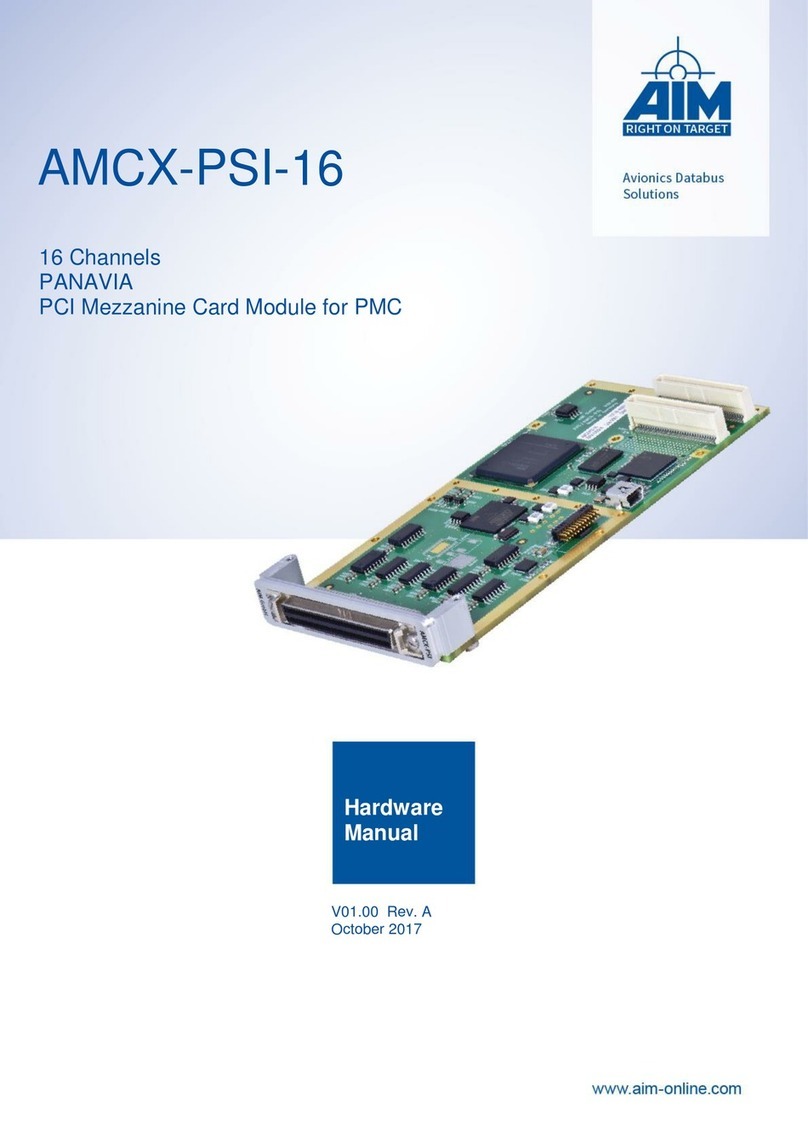
iv
TABLE OF CONTENTS
1Introduction ............................................................................................................1
1.1 General........................................................................................................................................1
1.2 How This Manual is organized..................................................................................................2
1.3 Applicable Documents...............................................................................................................2
1.3.1 Industry Documents.................................................................................................................2
1.3.2 Product Specific AIM Documents ............................................................................................2
2Installation ..............................................................................................................3
2.1 Preparation and Precaution for Installation ............................................................................3
2.2 Installation Instructions.............................................................................................................3
2.3 Frontpanel-Connectors .............................................................................................................4
2.3.1 MIL-STD-1553 Interface Connector.........................................................................................4
2.3.2 Trigger, IRIG and General Purpose Discrete-I/O (GPIO) Interface Connector .......................5
2.3.2.1 Trigger connection ..........................................................................................................6
2.3.2.2 IRIG-B connection...........................................................................................................6
2.3.2.3 GPIO connection.............................................................................................................8
2.3.2.4 RS232 connection.........................................................................................................11
2.4 Board to Board Connector (B2B connector).........................................................................12
2.5 Front Panel LED’s ....................................................................................................................14
3Structure of the APE1553-1/-2.............................................................................15
3.1 PCI Express Interface and BIU-I/O FPGA...............................................................................16
3.1.1 PCI Express Bus Interface.....................................................................................................16
3.1.2 Global RAM Interface and Arbitration....................................................................................16
3.1.3 SPI Controller for SPI-Flash update programming................................................................16
3.1.4 MIL-STD-1553 Encoder.........................................................................................................16
3.1.5 MIL-STD-1553 Decoder.........................................................................................................16
3.1.6 IRIG-B Encoder/Decoder and Timecode Processor (TCP)...................................................17
3.1.7 Maintenance RS232 Interface ...............................................................................................17
3.1.8 External Trigger Inputs and Outputs......................................................................................17
3.1.9 User programmable General Purpose Discrete-I/O (GPIO)..................................................17
3.2 Global RAM...............................................................................................................................18
3.3 BIU Section ...............................................................................................................................18
3.4 Physical Bus Interface with two Dual Redundant MIL-STD-1553B Channels....................18
3.5 Voltage Supplies ......................................................................................................................20
4MILSCOPE FUNCTIONALITY...............................................................................21
4.1 Structure of the APE1553-1/2-DS............................................................................................21
4.1.1 MILScope PBI section............................................................................................................22
4.1.2 MILScope Mainboard section ................................................................................................22
4.2 Implemented MILScope functions..........................................................................................23
4.2.1 Trigger Functions...................................................................................................................23
4.2.2 Input Filter and Noise.............................................................................................................24
4.3 External MILScope A/DC Channels........................................................................................24
5TECHNICAL DATA................................................................................................25
6NOTES...................................................................................................................31
6.1 Acronyms..................................................................................................................................31




























